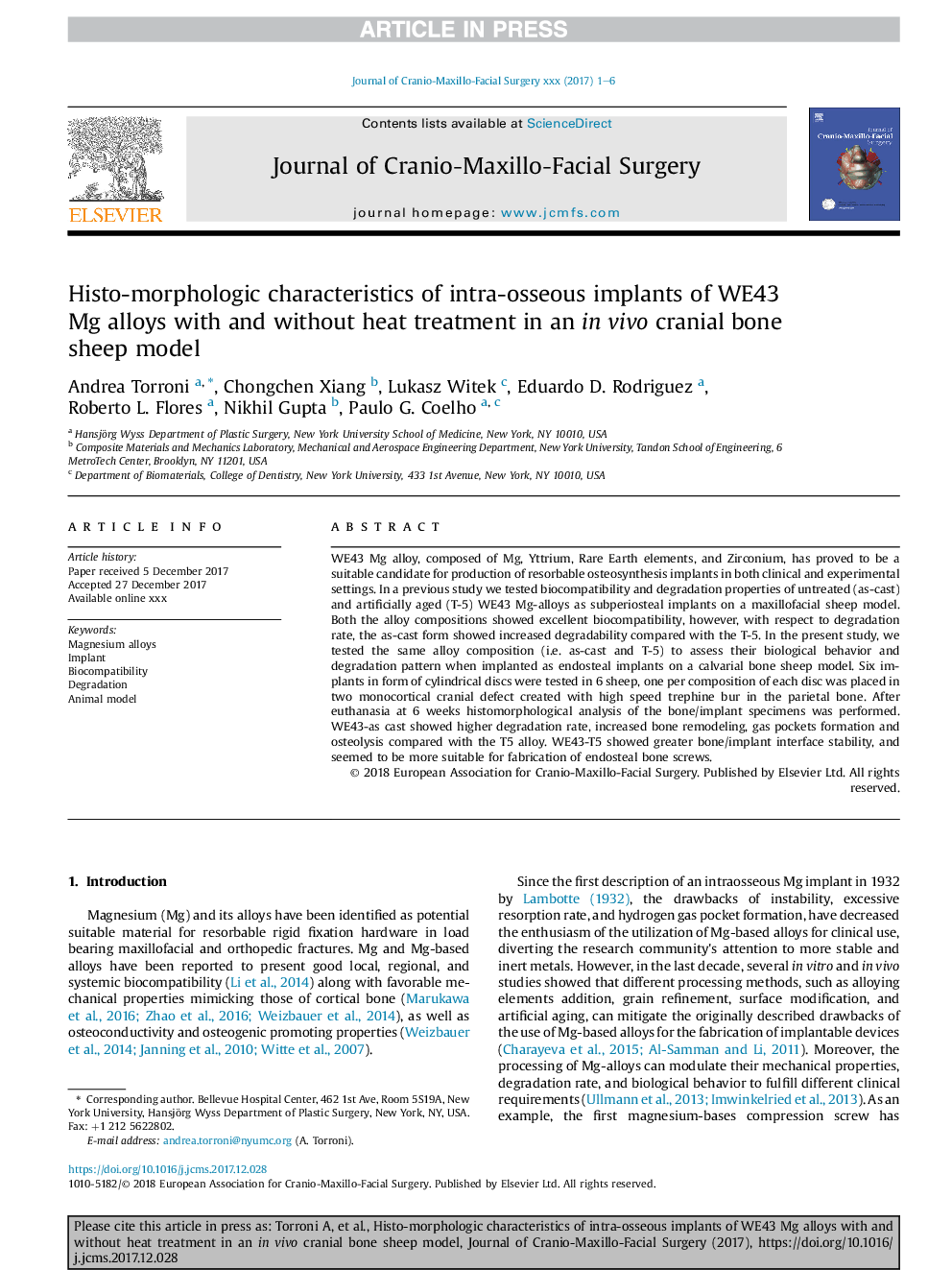| Article ID | Journal | Published Year | Pages | File Type |
|---|---|---|---|---|
| 8698882 | Journal of Cranio-Maxillofacial Surgery | 2018 | 6 Pages |
Abstract
WE43 Mg alloy, composed of Mg, Yttrium, Rare Earth elements, and Zirconium, has proved to be a suitable candidate for production of resorbable osteosynthesis implants in both clinical and experimental settings. In a previous study we tested biocompatibility and degradation properties of untreated (as-cast) and artificially aged (T-5) WE43 Mg-alloys as subperiosteal implants on a maxillofacial sheep model. Both the alloy compositions showed excellent biocompatibility, however, with respect to degradation rate, the as-cast form showed increased degradability compared with the T-5. In the present study, we tested the same alloy composition (i.e. as-cast and T-5) to assess their biological behavior and degradation pattern when implanted as endosteal implants on a calvarial bone sheep model. Six implants in form of cylindrical discs were tested in 6 sheep, one per composition of each disc was placed in two monocortical cranial defect created with high speed trephine bur in the parietal bone. After euthanasia at 6 weeks histomorphological analysis of the bone/implant specimens was performed. WE43-as cast showed higher degradation rate, increased bone remodeling, gas pockets formation and osteolysis compared with the T5 alloy. WE43-T5 showed greater bone/implant interface stability, and seemed to be more suitable for fabrication of endosteal bone screws.
Related Topics
Health Sciences
Medicine and Dentistry
Dentistry, Oral Surgery and Medicine
Authors
Andrea Torroni, Chongchen Xiang, Lukasz Witek, Eduardo D. Rodriguez, Roberto L. Flores, Nikhil Gupta, Paulo G. Coelho,
